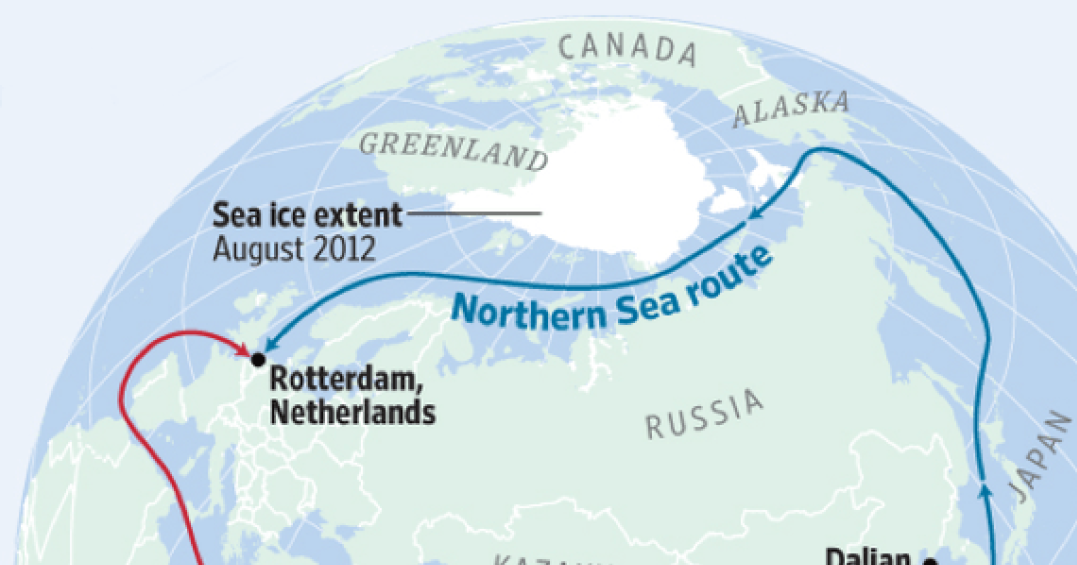President-elect Donald Trump, during a long news conference on Tuesday, spoke about his interest in securing U.S. control of Greenland and the Panama Canal, and said he would not rule out the use of military force.
Below is a look at where the two places are and why Trump might want the U.S. to control them.
Where is Greenland and why would Trump want to control it?
Greenland is located to the northeast of Canada and is largely covered by the Greenland Ice Sheet. The largest island in the world, but home to only around 60,000 people, it is a semi-autonomous territory of the Kingdom of Denmark, with its own elected government.
Its location between the U.S., Russia and Europe makes it extremely strategic for both economic and defense purposes — especially as melting sea ice has opened up new shipping routes through the Arctic.
It is also the location of the northernmost U.S. military base.
“We need Greenland for national security purposes,” Trump said Tuesday. “I’m talking about protecting the free world. You look at — you don’t even need binoculars — you look outside. You have China ships all over the place. You have Russian ships all over the place. We’re not letting that happen. We’re not letting it happen.”
 An illustration by the European University at St. Petersburg shows the Northern Sea shipping route, which a Russian tanker traversed for the first time ever in the winter in February 2021, and the longer southern Suez Canal route. European University at St. Petersburg
An illustration by the European University at St. Petersburg shows the Northern Sea shipping route, which a Russian tanker traversed for the first time ever in the winter in February 2021, and the longer southern Suez Canal route. European University at St. Petersburg
Greenland also has oil, natural gas and rare mineral resources, some of which are used in products including military technology and electric vehicles, which currently originate most often from Russia and China.
What is the Panama Canal and why would Trump want it?
About 40% of U.S. container shipping currently travels through the Panama Canal, according to the trade publication CargoNOW. The canal serves as a shortcut between the Pacific Ocean and the Caribbean Sea and, beyond that, the Atlantic Ocean.
Trump said that the United States needs the Panama Canal for “economic security,” falsely alleging that it is being “operated by China.”
“The Panama Canal is vital to our country. It’s being operated by China. China! And we gave the Panama Canal to Panama. We didn’t give it to China, and they’ve abused it. They’ve abused that gift. It should have never been made,” Trump said.
Panama’s President Jose Raul Mulino has disputed that.
“There is absolutely no Chinese interference nor involvement in anything to do with the Panama Canal,” he said in late December.
 The Panama Canal is a vital global trade route for maritime commerce. Elmurod Usubaliev/Anadolu Agency/Getty
The Panama Canal is a vital global trade route for maritime commerce. Elmurod Usubaliev/Anadolu Agency/Getty
Panama’s Foreign Minister Javier Martínez-Acha said Tuesday that his government hadn’t spoken formally with Trump or his team about the canal recently, but he reiterated previous comments from the country’s president that the canal would remain under Panamanian control.
“The sovereignty of our canal is not negotiable and is part of our history of struggle and an irreversible conquest,” said Martínez-Acha.
The history of Greenland
The Kingdom of Denmark began colonizing Greenland in the early 18th century, hundreds of years after Vikings from the same distant land first arrived to set up residency. It was not until World War II that the U.S. established a presence on the island, when then-Danish Ambassador to the U.S., Henrik Kauffmann, refused to surrender to the rule of Denmark’s Nazi occupiers.
Denmark was liberated from Nazi occupation in 1945, but the U.S. did not leave its military base, Pituffik Space Base, which to this day remains the American military’s northernmost installation.
The history of the Panama Canal
The Panama Canal was built by the U.S. between 1904 and 1914. It serves as a shortcut between the Pacific Ocean and the Caribbean, dramatically shortening shipping routes from Asia to ports in the eastern U.S.
It was first managed by the U.S. government for decades, which caused tension with Panama.
In the 1970s, the U.S. and Panama signed a treaty agreeing to the permanent neutrality of the canal. The U.S. committed to relinquishing control of the canal and did so fully in 1999. The canal is now run by the Panama Canal Authority.



